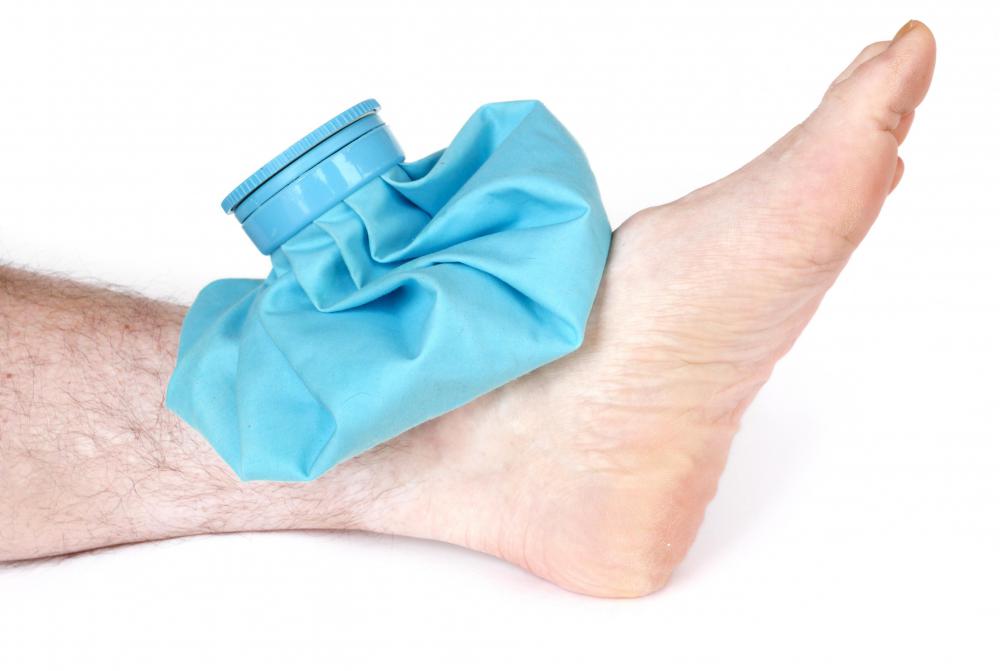At WiseGEEK, we're committed to delivering accurate, trustworthy information. Our expert-authored content is rigorously fact-checked and sourced from credible authorities. Discover how we uphold the highest standards in providing you with reliable knowledge.
How do I Choose the Best Ice Bag?
There are many ways to take advantage of cold therapy, and the best ice bag for your use is generally the bag most capable of offering targeted aid for joint pain and sore muscles. Prime ice bag products also tend to correspond to the type of injury and its location on the body. Cold therapy refers to the use of an ice pack, cold compress, or similar products that provide cooling pain relief to slow down blood flow after an injury. These ice bags reduce the swelling associated with a muscle injury or sprain and can halt bleeding.
A traditional ice bag or water bottle features a removable ice bag top that can be removed to place cold water or crushed ice inside. The oversized bag design typically makes these types of bags best suited for treating various small ligaments, tendons, and muscular injuries. Since traditional ice bags can be reused frequently, are often economically priced, and can be used on various parts of the body, they are usually best for families and the treatment of general pains and injuries. The best ice bags also tend to feature liners and leak-proof lids to protect against spills.

Gel packs are another type of ice bag that may be best for those who want to avoid the hassle of having to fill up a bag. These packages usually include a plastic exterior with a soft gel packaged inside. The gel pack can often just be kept in the freezer or refrigerator until needed. These are often thought to be the best option for those who want to avoid the mess of having to deal with refillable bags or bottles. Both gel packs and refillable ice bags can often serve double duty by being filled up with hot water and used for injuries that respond best to heat therapy. When choosing gel packs, products that do not freeze solid but instead remain flexible and soft can be more comfortable to wear.

In some instances, a more advanced ice bag that conforms to the body part being treated may be the most suitable option for athletes and those receiving physical therapy or chiropractic care. Compression wraps are often used for this purpose and consist of small refreezable gel packets that attach to a garment. The ice provides the typical benefits of cold therapy, while the compression garment works to press the cold further into the affected area, reducing inflammation and pain. Materials used in the wrap can also provide a protective barrier so the skin does not come into direct contact with the ice. Compression packs may be available in roll-on or wrap designs. Wraps can be adjusted to provide a comfortable level of compression, while roll-on sleeves may be easier to keep in place.
In certain situations, the best ice bag is one that is capable of providing instant relief while on the go. Ice packs that come in insulated carrying coolers can be filled up, frozen, and carried to work or to the gym to treat chronic pain or for post-activity ice massages. For emergencies, instant cold packs may be the best option. These cold packs do not require refrigeration and are simply squeezed or shaken to activate a chemical reaction that creates a cooling effect.
AS FEATURED ON:
AS FEATURED ON:












Discuss this Article
Post your comments